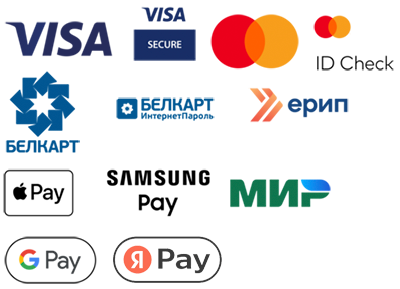There is such a thing in economics as a break-even point.
It always refers to the activity where any products/services are produced and sold (there is a commercial sign), and there is a need to determine its minimum quantity from the point of view of economic feasibility.
Its essence lies in the fact that this is the estimated volume of output for a certain period of time, at which production as a whole maintains its break-even - there is no profit or loss.
On the graph, it is projected exactly as a point at the intersection of the lines - revenue (without VAT) and total costs on the volume of output.
The break-even point always answers the question – how much in physical volume is the minimum necessary to produce a product/service so that the profit/loss on the activity as a whole for the period is at zero.
In addition to the break-even point, there is also a break-even level, but it already answers the question of how much money it is necessary to produce and sell at least in order to get the result (profit /loss) to zero.
To understand the principle of calculating the break-even point and its graphical meaning, we will build such a graph step by step on a simple example, based on the following data.
The company produces some products.
The estimated period is a month (30 days).
One unit of production requires $300 variable costs.
Overhead costs (fixed costs) of the company for the estimated period are $10,000.
She can sell 1 unit of production for $ 1000.
Step 1 - we build the axes: vertical - where the cost values of our indicators (costs/ revenue) will be displayed and horizontal - for their actual value (quantity).

Step 2 - we carry out direct fixed costs for the entire volume produced during the month at the level of $10,000.

That is, regardless of how many units the company produces per month (at least 1 or 23 units), overhead costs will be at the same level (they do not change from volume).
Step 3 - draw a line proportional to the dependence of variable costs on volume (quantity) - from a point along the cost axis of $10,000.

For variable costs, this mark can be conditionally represented at the level of 0, but together with the level of fixed costs, which even with zero volume will be equal to $10,000, the direct variable costs will form the level of the total expenses of the company depending on the volume.
I.e. produced 1 unit. – total expenses for the month = $10,000 + $300; produced 2 units. - total monthly costs = $10,000 + $600; produced 3 units. - total monthly costs = $10,000 + $900 and so on.

Thus, we built the dependence of the company's total expenses on the volume of output during the month, divided into variable and fixed costs.
Step 4 - draw a line of proportional dependence of revenue on volume (quantity) and determine the break-even point.

Produced 1 unit . – revenue for the month = $ 1000; produced 2 units. - revenue per month = $ 2,000; produced 3 units. - revenue per month =$3,000 and so on …
In the place of suppression of direct revenue from direct total costs, there will be a break-even point of products for this company in conditions of single-product production (production of one type of product, as in our example).
Knowing the formula for calculating the break-even volume corresponding to our point on the chart, it is possible to calculate its exact value:
Tb = Fixed costs per period /(Unit price – Variable costs per unit) = 10 000 $/(1 000 $ – 300 $ ) = 14 units.
Now the company understands at what volume of output it will have a loss, at what profit and where this border is located.

With multi-nomenclature activities, the calculation of the break-even point does not make deep sense, because in the process of cost calculation overhead costs by product types are distributed proportionally a certain base (according to accounting policy), which means they do not have their constancy with changing production volumes. In this case, it is more expedient to use the break-even level.
Note one important pattern when calculating the break-even point
In this example, the price level = $1 000, and the level of variable costs per unit = $ 300. This positive difference allows you to have a level margin profit of $700 ($1,000 - $300).
Due to this indicator, a more gentle angle of direct costs relative to direct revenue is formed on the chart, which allows these lines to intersect and the company to reach a break-even level of 14 units.

If the difference in the level of angles is opposite, i.e. the angle of inclination of the direct revenue is less than the angle of inclination of the direct costs, then these lines will never intersect. Margin profit in such a situation will have a negative value.
For example, the price dropped to the level of $ 250, and the level of variable costs per unit remained the same = $ 300. Margin profit = - $ 50. Graphically, it will look like this.

In this case, this situation already indicates the economic insolvency of the company and in general the absence of any possibility to reach a break-even level, regardless of the volume of output. The growth of volumes will only increase losses. It is more expedient to stop production altogether.
Therefore, margin profit is not only an important indicator on which the break-even level of the company depends, but also one of the fundamental criteria and levers of economic management of production.
Break-even point – what is the point and how to build a graph by steps – Somehow!



































там
там